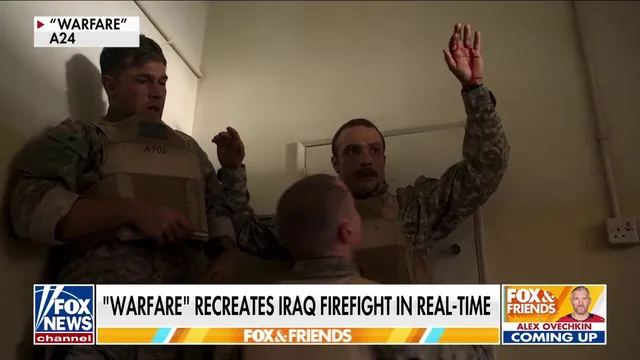
Warfare showcases brutal reality of combat in Iraq
2025-04-09 21:10- A platoon of Navy SEALs faced intense combat during a 2006 mission in Iraq, which is dramatized in the film.
- The filmmakers focused on authenticity, avoiding war movie clichés and highlighting the brotherhood among soldiers.
- The final film serves as a brutal portrayal of combat realities, challenging traditional war film narratives.
Express your sentiment!
Insights
In 2006, a platoon of Navy SEALs engaged in a firefight in Iraq, an experience that has been immortalized in a film by Ray Mendoza and Alex Garland. This film, titled 'Warfare', strives to present an accurate representation of combat, avoiding the clichés commonly associated with war movies. By immersing audiences in the immediate tension and chaos of battle, the film aims to provide an authentic look at the struggles faced by soldiers. Mendoza and Garland emphasized their commitment to authenticity, claiming they took no intentional dramatic license with the depiction of events. The portrayal focuses on the camaraderie among the soldiers, showcasing their deep bonds formed through shared experiences in high-pressure situations. The film features a range of characters, typically seen as the unsung heroes of war, whose identities remain largely unexamined while their loyalty and dedication to each other are highlighted. Despite the absence of traditional dramatic arcs or character backstories, 'Warfare' dives deep into the emotional and physical realities of combat. The sound design immerses viewers in the chaos, providing a visceral experience that reflects the unpredictability and intense nature of warfare. Viewers follow the SEALs as they navigate danger, with their commitment to one another shining through amid the brutality of combat. The filmmakers aimed to challenge the stereotype of war films by presenting a nuanced portrayal that reflects the unforgiving nature and harsh realities of soldiering. Beyond simply being a war film, 'Warfare' also conveys a sense of brotherhood and respect among the men involved, illustrating how such relationships emerge in life-or-death scenarios. As audiences engage with this representation, they are encouraged to reflect on the complexities of military life and the true cost of conflict.
Contexts
Warfare profoundly impacts military relationships, both within armed forces and between allied nations. As conflicts unfold, the dynamics of cooperation, trust, and interoperability evolve, significantly influencing strategic outcomes. The essence of military relationships lies in shared objectives, mutual understanding, and the ability to coordinate effectively. However, the stressors of combat can strain these relationships, leading to frictions that must be managed to maintain operational effectiveness. Issues such as resource allocation, command structure disagreements, and differing national priorities often arise and can jeopardize collaborative efforts if not addressed adequately. Moreover, the aftermath of warfare frequently reshapes the landscape of military alliances. Post-conflict scenarios demand a reassessment of partnerships and coalitions, where nations must navigate the complexities of rebuilding trust and integrating lessons learned into future operations. Historical precedents show that while some relationships strengthen due to shared experiences in warfare, others may falter under the weight of divergent post-war goals and national interests. The challenge lies in fostering resilience within military relationships to withstand the pressures exerted by wartime experiences. Additionally, the evolution of technology and warfare tactics has introduced new dimensions to military relationships. Cyber warfare, drones, and advanced military systems necessitate that allies adapt their strategies and enhance interoperability, compelling a reevaluation of existing partnerships. Countries must engage in ongoing dialogue and joint training exercises to ensure alignment of military capabilities and objectives in an increasingly complex global environment. Such adaptations require not only technical adjustments but also the cultivation of personal relationships among military leaders to ensure seamless communication and cooperation. In conclusion, the impact of warfare on military relationships is multifaceted and profound. As nations navigate the trials of combat and the complexities of subsequent peace, the ability to maintain strong military ties is critical for future collaboration. Understanding the stresses and changes warfare imposes on relationships can guide policymakers and military leaders in fostering effective partnerships. Acknowledging the need for continuous adaptation and communication is essential in ensuring that relationships endure and thrive despite the challenges posed by warfare.